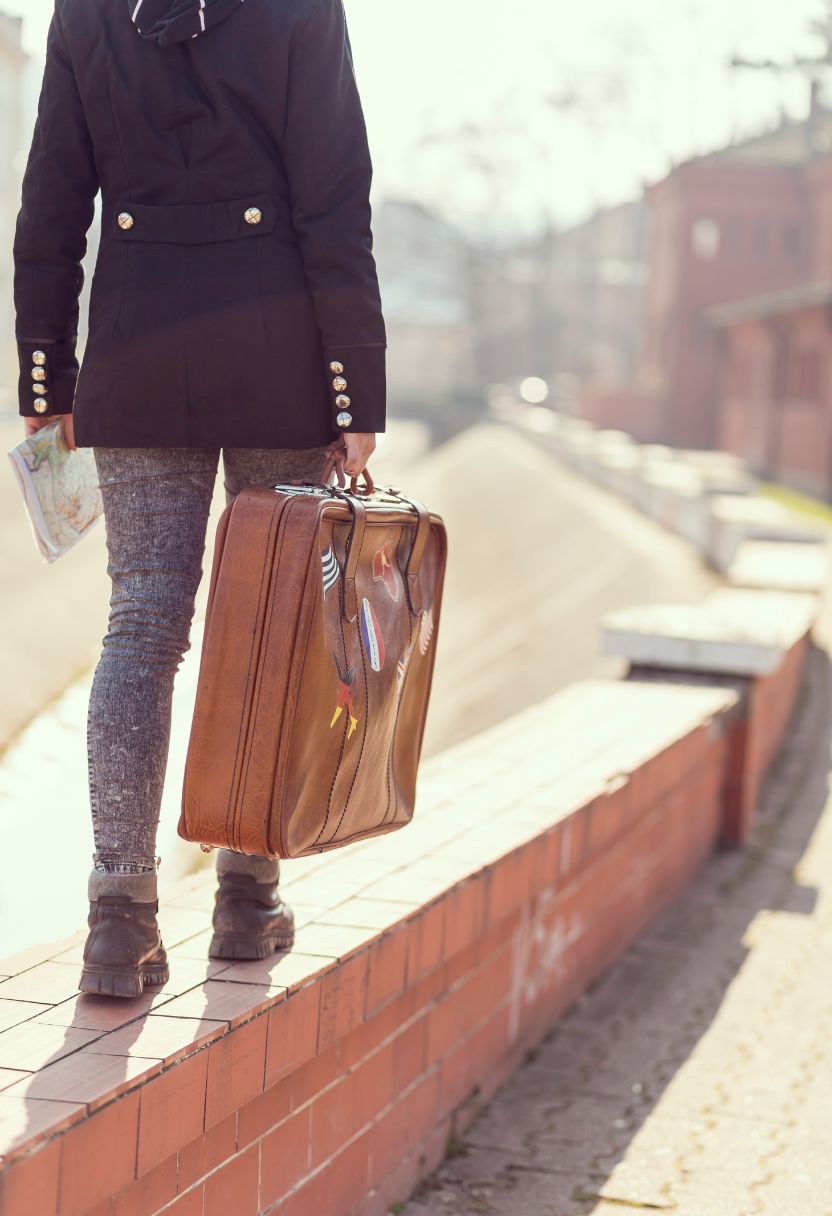

Bicycle sharing programs have really taken off in cities around the world, and for good reason! They offer a bunch of benefits for travelers that are just too good to ignore. Let's dive into some of those perks, shall we?
First off, bicycle sharing is not only convenient but also super flexible. Travelers don't have to worry about renting a car or figuring out complicated public transportation systems. Just grab a bike from one station and drop it off at another—it's that easy! To read more visit right now. You won't be tied down by bus schedules or stuck in traffic either. Plus, you can explore hidden gems and take detours that you'd probably miss otherwise.
visit . Another great thing is the savings. Renting bikes is usually way cheaper than other forms of transportation, especially taxis or ride-shares. It doesn't burn a hole in your pocket like those options might. And hey, who wouldn't want to save some cash while traveling? More money for food and souvenirs!
Oh, let's not forget about the environmental impact. By choosing to ride a bike instead of hopping into a gas-guzzling vehicle, you're doing your bit to reduce your carbon footprint. It's pretty cool knowing you're making eco-friendly choices while exploring new places.
Now, riding a bike ain't just good for the planet; it's good for you too! It's no secret that physical activity boosts mood and energy levels. So why not combine sightseeing with some exercise? You'll feel more energized throughout your trip and less guilty about indulging in all those local delicacies.
One downside folks might think of is safety concerns on busy city streets. But most cities with bike-sharing programs also have dedicated cycling lanes or paths designed to keep cyclists safe from traffic. So that's not as big an issue as it used to be.
However, it's important to mention that bicycle sharing isn't always perfect—sometimes bikes might be unavailable when you need them most or stations could be full when you try returning one. These small inconveniences shouldn't deter anyone though; they’re minor hiccups compared to all the advantages!
In conclusion—you see what I did there?—bicycle sharing programs provide numerous benefits for travelers: convenience, cost savings, environmental friendliness, and health improvements among them all without much hassle! If you haven't tried it yet on your travels well gosh darn it give it a go next time!
Bicycle sharing programs have taken the world by storm, becoming an integral part of urban transport solutions. Some cities have done exceptionally well in implementing these systems, making them popular destinations for cyclists and tourists alike. However, not all cities are created equal when it comes to bike-sharing success.
Take Paris, for instance. The French capital's Vélib' system is often cited as one of the most successful bicycle-sharing programs worldwide. Launched in 2007, the program has expanded significantly and now boasts thousands of bikes available across the city. Whether you're a local or a visitor, it's hard not to notice those grey bikes parked at almost every street corner. But hey, it's Paris! Who wouldn't want to cycle around its beautiful streets?
Moving across the pond to New York City – Citi Bike has become synonymous with daily commutes and sightseeing tours alike since its inception in 2013. Despite initial skepticism—some folks thought New Yorkers would never embrace cycling—the program has flourished. You can't walk down a block in Manhattan without seeing someone zipping by on one of those blue bicycles.
Surprisingly enough, even smaller cities like Montreal have made significant strides in this area. BIXI, Montreal’s bike-share system, offers an extensive network that rivals those found in much larger metropolises. It’s so successful that other cities looked at BIXI as a model when setting up their own systems.
On the other hand (because there’s always another hand), some places haven't quite nailed it yet. Los Angeles tried but just couldn’t get people excited about bike-sharing; maybe it's too car-centric? Or perhaps it's just spread out too far? Whatever the reason might be, L.A.’s Metro Bike Share hasn’t been able to match the success seen elsewhere.
In Asia too—oh wow—they’ve got some incredible examples! Take Hangzhou in China; their public bicycle service is enormous! With over 80 thousand bikes and counting—it’s no wonder other regions look up to them.
But don't think Europe is resting on its laurels either! Cities like Copenhagen continue leading innovations with their Bycyklen smart-bikes equipped with tablets showing routes and information—pretty nifty if you ask me!
Not everything runs smoothly though—even among stars like London’s Santander Cycles (formerly known as Boris Bikes). Maintenance issues occasionally crop up or docking stations run out of space which can be frustrating for users—but let’s face it: what transport system doesn’t have hiccups?
So while many places shine brightly under spotlight showcasing efficient bike-share programs creating eco-friendly travel options—they're still evolving creatures bound facing hurdles here n’ there.
In conclusion—we see how widely adopted these systems are globally despite varied degrees success—but overall impact remains undeniably positive fostering greener commuting choices enhancing urban mobility landscapes—you won’t argue against progress right?!
And oh boy—isn’t that exciting?!
When it comes to figuring out the best time of year to travel to Europe, you just can't ignore the special events and festivals that sprinkle the calendar.. They add a unique flavor to your trip, making it more memorable than ever.

Posted by on 2024-07-13
Final Thoughts and Recommendations for Safe Travel So, you've made it this far in figuring out how to travel safely during a pandemic.. Kudos to you!

Posted by on 2024-07-13
When it comes to traveling on a budget, finding the most affordable destination can be tricky.. You don't want to break the bank but still aim for an enjoyable experience.

Posted by on 2024-07-13
Traveling the world on a budget can seem like a dream, but it's not impossible.. One of the best-kept secrets that airlines don't want you to know about are error fares.

Posted by on 2024-07-13
Traveling can be an exhilarating experience, filled with new sights, sounds, and adventures. One way to explore a city like a local while also staying active is by using a bicycle sharing program. These programs are popping up in cities all over the world, offering an eco-friendly and convenient way to get around. But how exactly do you use one of these programs? Don’t fret — it's easier than you might think!
First things first, you'll need to find out if the city you're visiting has a bicycle sharing program. A quick online search should tell ya that. Once you've confirmed that there is one available, download the app associated with the service. Most bike-sharing programs have their own apps which allow you to locate bikes, see docking stations, and even pay for your rentals.
Now comes the part where people often get confused: registering for the program. It’s not complicated at all! Usually, you’ll need to create an account by providing some basic information like your name and email address. Some services require credit card information upfront while others let you pay as you go.
Once you're registered, use the app to find a nearby docking station with available bikes. When you get there – ta-da! – unlocking one is typically just a matter of scanning a QR code on the bike or entering a code from the app into a keypad on the dock. And voila! The bike is yours to ride.
However, don't think you're free from responsibility once you've got your hands on those handlebars! Make sure to follow all local traffic laws; they're usually very similar to what you'd follow back home but it never hurts checking them out specifically for cyclists in that area.
One thing people often forget about is returning the bike properly when they’re done using it. You can't just leave it anywhere - no sir! Find another docking station near your destination through the app and securely lock it back into place. You'll know it's properly docked when you hear that satisfying click sound or see a confirmation message on your phone.
Lastly, keep an eye out for any time limits or extra fees associated with longer rides. Many programs offer different pricing plans so choose one that best fits how long and how often you'll be riding during your trip.
In conclusion (whew!), using a bicycle sharing program while traveling isn't rocket science but does require some initial setup and attention to details such as traffic rules and return policies. It’s economical, environmentally friendly and gives you freedom to explore places off-the-beaten-path at your own pace without being tied down by public transport schedules or expensive taxi fares.
So next time you're planning an adventure – why not give bike sharing a try? Just remember: don’t leave it unlocked somewhere random because then who knows where it'll end up?!

Bicycle sharing programs have become a popular choice in many cities around the world, and their environmental impact can't be ignored. These programs aim to reduce traffic congestion and pollution by offering an eco-friendly alternative to cars and buses. But let's not kid ourselves; it's not like they're a magic bullet.
First off, one of the biggest benefits of bike sharing is that it cuts down on car usage. When people opt for bikes instead of hopping into their cars, there's less exhaust being pumped into the air. This means lower levels of carbon dioxide and other nasty pollutants that contribute to climate change and poor air quality. Wow! Isn't that great? However, we shouldn't forget that manufacturing these bicycles also produces emissions, so it's not all sunshine and rainbows.
Another thing worth mentioning is space efficiency. Bikes take up much less space than cars do, both when they're moving and when they're parked. You don't need big parking lots or wide lanes for bikes, which frees up urban space for parks or pedestrian areas—places where people can actually enjoy themselves rather than just pass through.
Yet, it's important to note that bike-sharing schemes aren't perfect. They require maintenance vehicles to redistribute bikes from crowded spots to places where they're needed more. These vans or trucks often run on gasoline or diesel, adding back some pollution we're trying to avoid in the first place. It's kinda ironic if you think about it.
And let’s talk about durability for a sec. Shared bikes are used by multiple people daily, which means they wear out faster than personal ones might. This leads to frequent replacements and repairs—again contributing to waste and resource consumption.
On top of all this, not everyone chooses bicycles over other forms of transportation just because they’re available. Some people simply don’t find biking practical due to long distances or challenging weather conditions like snow or heavy rainstorms. So while bike-sharing programs do offer an alternative mode of transport, they don’t necessarily convert every car driver into a cyclist overnight.
In conclusion (if I must), bicycle-sharing schemes certainly have their advantages when it comes to reducing traffic congestion and lowering emissions from personal vehicles—but they're far from flawless solutions for our environmental woes. Still though—they're definitely steps in the right direction towards greener cities!
When it comes to exploring a city, tourists often face the dilemma of choosing the most cost-effective mode of transport. Bicycle sharing programs have emerged as a popular option in many cities around the world. But how do they stack up against other modes of transportation? Let's dive into this comparison.
Firstly, let's talk about the cost factor. Bicycle sharing services are usually quite affordable. Most programs offer hourly rates or daily passes that won't break the bank. In contrast, taxis can be pretty expensive, especially if you get stuck in traffic – which happens more often than you'd like! Public transportation like buses and subways may be cheaper than taxis, but they're not always convenient for sightseeing since routes can be confusing and stops might not align with your itinerary.
Now, let’s think about car rentals. While renting a car gives you flexibility to travel at your own pace, it comes with hidden costs like fuel, parking fees (ugh!), and insurance. Plus, driving in an unfamiliar city can be stressful – who wants to deal with that on vacation?
On the flip side, bicycle sharing has its perks beyond just being budget-friendly. For one thing, it's eco-friendly; you're pedaling away without emitting any pollutants. It's also good exercise – something that's easy to neglect while traveling! However, it's not all sunshine and roses; cycling isn't always practical for long distances or rainy weather.
Moreover, consider time efficiency. Bicycles allow you to weave through traffic jams effortlessly compared to cars stuck at red lights forever! But again, they can't match the speed of trains or metros for covering vast distances quickly.
Safety is another important concern. While bicycles expose riders directly to road hazards (yikes!), public transport passengers generally don’t face such risks inside their vehicles. However! When safety measures are followed – helmets worn and bike lanes used properly – biking remains relatively safe.
In conclusion (well almost), when comparing costs between bicycle sharing programs and other modes of transport for tourists, bikes often come out ahead financially while offering additional benefits like environmental friendliness and health perks too! That said though... they aren't perfect; sometimes Mother Nature simply doesn't cooperate or destinations lie too far apart for biking convenience.
So yeah - bikes ain't flawless but they're certainly worth considering next time you're planning your trip around town!

Sure, here we go:
When you're traveling to a foreign city, using shared bicycles can be an exciting and convenient way to explore. Yet, it's not without its risks. It's important to keep some safety tips and best practices in mind so you don't end up in a sticky situation.
First off, always make sure the bike is in good condition before hopping on. It ain't uncommon for shared bikes to have wear and tear after being used by countless people. Check the brakes, tires, and lights if they are functioning properly. If something doesn't feel right or looks damaged, it’s better not to take chances—just get another one.
Secondly, familiarize yourself with the local traffic rules. Not every country has the same road regulations as your home town; failing to adhere could land you in trouble or worse, cause an accident. For example, some places might require cyclists to wear helmets while others do not. Knowing these rules is crucial for your safety.
Another thing you should really avoid doing is riding without proper gear. Yes, sometimes helmets aren't provided with the shared bikes but that shouldn't stop you from getting one yourself if you're planning on cycling frequently during your trip. Safety first!
Don't forget about navigation! Using a map or GPS app can be incredibly useful when you're exploring unfamiliar streets. However, constantly looking at your phone can distract you from what's happening around you—cars turning unexpectedly or pedestrians crossing suddenly. So maybe try using audio directions through earphones instead of staring down at the screen all the time.
Oh! And let's talk about parking etiquette for a moment here: Please don’t just leave the bike anywhere once you're done using it! Most cities have designated areas where you should park shared bikes; failing to do so can lead to fines or even more severe penalties in certain places.
It's also smart not to ride alone late at night especially if you're unfamiliar with the area. While most cities are generally safe, it's better not to test fate by venturing into deserted streets all by yourself when it's dark out there.
One last tip: always lock your bike properly after use—even if it's just a quick errand run inside a store—you never know how quickly things can disappear!
In conclusion (or rather finally), shared bicycles offer great flexibility and freedom when visiting new places but come with their own set of challenges too. By following these tips and best practices such as checking bike conditions beforehand, wearing appropriate gear like helmets, understanding local traffic laws and being mindful about navigation & parking—you'll enjoy safer rides no matter where life takes ya!